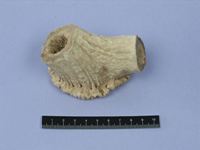
Figure 42: Antler base from Passewaaijse Hogeweg. Photo ACVU-HBS.
Despite the dense population of the Dutch River Area, there was room for wild mammals and birds in the local landscape. The small numbers of wild animals found in Tiel-Passewaaij suggest that their contribution to the local economy was marginal (Table 3). Butchery marks on bones from red deer, beaver and goose indicate that meat of wild animals was consumed; the low percentage of wild animal fragments means that this did not occur often or in large quantities. Although the contribution of wild animals to the diet and the local economy may have been negligible, this does not mean that wild animals were not important to the inhabitants of the two settlements. Antler, especially, formed a valuable raw material for the production of tools and objects. Feathers serve a practical purpose as insulation and as part of arrows, but can also be used for decoration and display (Serjeantson 1997, 257). Animals possibly hunted for their fur in Tiel-Passewaaij are wild cat, stoat, otter, beaver, hare and brown bear. Red deer were not necessarily hunted for their antlers; at the right time of year, in late winter, shed antlers can be collected. That this was done in Tiel-Passewaaij is shown by two fragments of antler that were shed (Fig. 42).
| Species | PHW | % of NISP | OTW | % of NISP |
|---|---|---|---|---|
| red deer (Cervus elaphus) | 21 | 18 | ||
| roe deer (Capreolus capreolus) | 1 | - | ||
| wild boar (Sus scrofa) | 11 | 5 | ||
| wild cat (Felis silvestris) | 1 | 1 | ||
| stoat (Mustela erminea) | 1 | - | ||
| brown bear (Ursus arctos) | 1 | - | ||
| otter (Lutra lutra) | - | 2 | ||
| beaver (Castor fiber) | 3 | - | ||
| hare (Lepus europaeus) | 1 | - | ||
| total mammals | 40 | 0.63 | 26 | 0.71 |
| goose (Anser spec.) | 21 | - | ||
| duck (Anas spec.) | 10 | - | ||
| swan (Cygnus spec.) | 1 | - | ||
| crow (Corvus corone) | 8 | 1 | ||
| raven (Corvus corax) | 1 | - | ||
| magpie (Pica pica) | 3 | - | ||
| common snipe (Gallinago gallinago) | 1 | - | ||
| water rail (Rallus aquaticus) | 1 | - | ||
| grey heron (Ardea cinerea) | 2 | - | ||
| crane (Grus grus) | 1 | - | ||
| white-tailed eagle (Haliaetus albicilla) | 3 | - | ||
| cinereous vulture (Aegypius monachus) | 2 | - | ||
| total birds | 54 | 0.85 | 1 | 0.03 |
Wild animals can help us get an idea of the local landscape. However, we must beware of the effect of trade. In the absence of a local population of deer, for instance, antler could have been traded over long distances. It is important to realise that the wild animals found in Tiel-Passewaaij are not a direct reflection of the relative abundance of different species in the area. Some species may have been preferentially hunted, for different reasons. Some species may even have been illegal or taboo to hunt.
The wild animal bones from Tiel-Passewaaij demonstrate that not all of the local landscape was cultivated. There must have been enough suitable uncultivated land in which large mammals lived.
Wild animals would have found a suitable habitat in the riverine woodland on the levees and the extensive reed beds and grassland of the flood basins. This kind of habitat will support red deer, roe deer, wild boar and wild cat. Stoats will live in almost any type of habitat. Hares can live on arable fields and fallow fields.
The presence of otter and beaver, as well as the bird species found in Tiel-Passewaaij remind us of the importance of water in this river landscape. Goose, duck, swan, common snipe, water rail, grey heron and white-tailed eagle are all dependent on wetlands or open water. The single fragment of brown bear cannot be taken as an indicator of the local landscape. The fragment, a tooth, could have reached Tiel-Passewaaij as part of a pelt. The skull and claws are often left attached to a pelt. Archaeological bear finds from the Roman period in the Netherlands are limited to a find from Valkenburg (Verhagen 1990). The presence of an ursarius or bear catcher attached to the Thirtieth Legion in Xanten in the 3rd century suggests that bears were still present in the area around Xanten (M. Polak, pers. comm.).
© Internet Archaeology/Author(s)
URL: http://intarch.ac.uk/journal/issue27/5/3.3.4.html
Last updated: Tue Nov 10 2009